Dry kibble is known for its budget-friendly price and high nutritional value. While many pups have no problem wolfing it down, some struggle to chew this particular kind of food, as the hard, crunchy texture can be difficult on sensitive mouths (or “refined” taste buds!).
Luckily, it’s pretty easy to soften up dry dog food, and doing so can even come with extra nutritional perks depending on the method you use. We’ll share a few of the best ways to soften your dog’s kibble below.
10 Ways to Soften Up Dry Dog Food
There are several ways to safely soften up dry dog food, though each approach is better suited to certain needs and situations than others. Some methods will soften the kibble without adding additional calories, while others can provide more nutritional benefits and/or a deeper flavor profile.
Before softening up your pup’s kibble, make sure to consider any food intolerances or allergies your dog has. Speak to your vet for dietary advice if necessary.
1. Water

The easiest and cheapest way to soften dry kibble is to mix in some water. Usually, around ¼ cup of water per meal is a good starting point. Make sure to use fresh, lukewarm water, and don’t use an excessive amount — if the food becomes too mushy, your pup will have a hard time eating it and may even turn his nose up at it!
Adding water to soften dry kibble is a simple way to increase your pup’s daily water intake. It can also slow down the speed your pup scoffs his food down, which may help prevent bloat.
2. Fish Oil
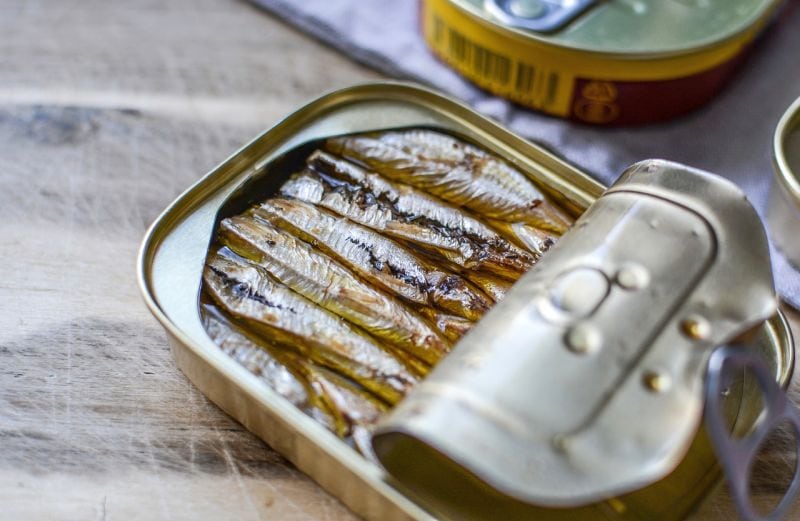
Adding fish oil to your four-footed woofer’s dry kibble won’t just soften it; it’ll also improve its nutritional value. Fish oil is rich in omega-3 fatty acids, which provide a range of anti-inflammatory effects. This kind of omega-3 supplementation may help with things like skin and coat issues as well as joint problems.
The exact amount of fish oil you should add to your pup’s kibble depends on the portion size and his weight, but keep in mind that the recommended daily dose of fish oil is around 75 to100 mg/kg total EPA/DHA. James L. Voss Veterinary Teaching Hospital has a more detailed guide on the appropriate dosage amount, but you can also just inquire with your vet.
3. Olive Oil
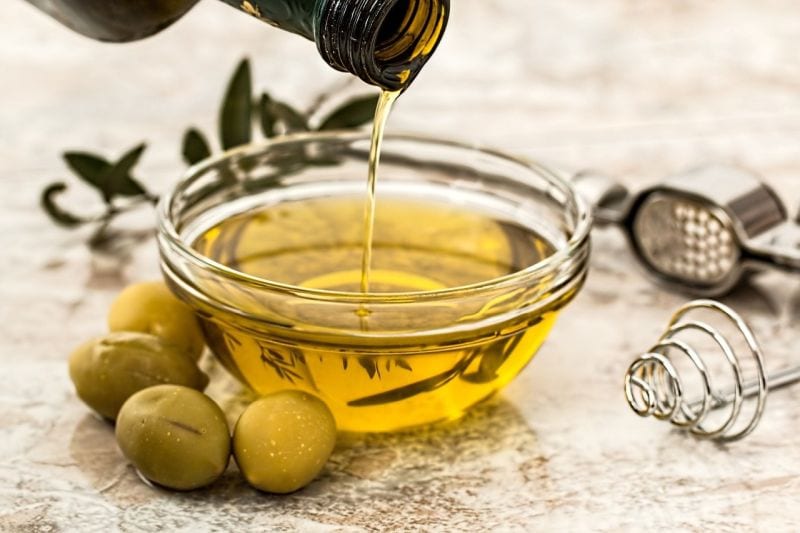
Olive oil, a kitchen staple, might not be the first thing that comes to mind when figuring out a way to soften your pup’s dry kibble. However, it’s definitely an option and an underrated one at that! Rich in monounsaturated fats, olive oil can boost your pup’s energy and even condition his coat (so yes, your pup will be boasting L’Oréal-worthy fur in no time #because he’s worth it).
To soften up your pup’s kibble, add a splash of olive oil — one teaspoon for every thirty pounds of body weight — combined with water. Make sure to use extra-virgin olive oil, since it has a lower acidity than other types and is less likely to upset your woofer’s stomach.
4. Yogurt
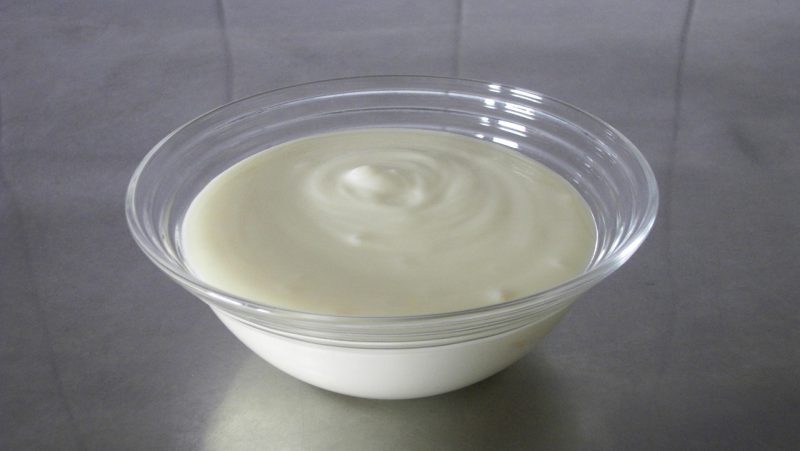
Adding a spoonful of yogurt to your pup’s dried kibble can help moisten it while also providing a source of natural probiotics. If you’re not familiar, probiotics are essentially live bacteria and yeasts that are known to have various health benefits (sounds scary, but it’s good stuff. We promise!) They can help improve gut health, aid digestion, and potentially strengthen the immune system. Yogurt is also packed with lots of calcium and protein.
Only give your pup unsweetened, plain, low-fat yogurt. As always, it is a dairy product so consult a vet before feeding your dog this if he is known to experience food intolerances. Greek yogurt is the best option since its lower lactose content is likely to be easier on his stomach.
Make sure to double-check the ingredients, even if the packaging says “plain” — the artificial sweetener xylitol, which is sometimes used in yogurt products, is toxic to dogs.
5. Milk
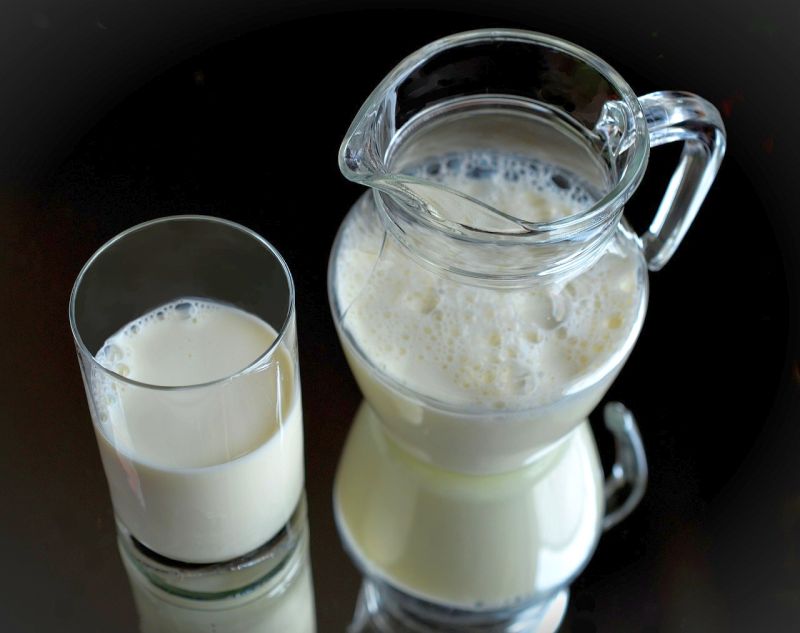
Milk isn’t a suitable option for dogs that are lactose intolerant. But if your pup’s stomach can handle it? It’s a nutritious, affordable way to soften up his dry kibble! Many dogs love the taste of milk — making it a great option for fussy eaters — and it comes packed with nutrients like protein, calcium, potassium, and vitamin D.
Add a few tablespoons of unsweetened cow’s or goat’s milk to your pup’s dry kibble. Feed on occasion and alternate with water. Keep in mind that milk is high in calories, so it isn’t an ideal option for dogs trying to trim down the pounds.
6. Bone Broth
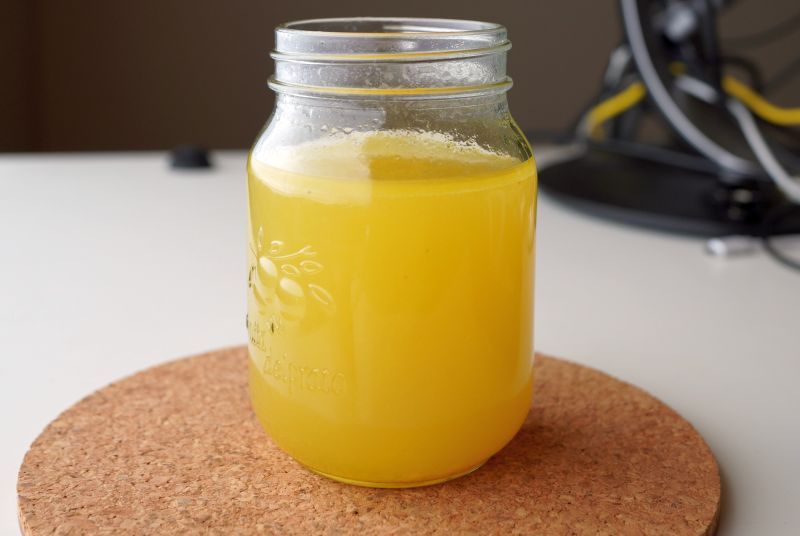
While slightly on the pricey side, bone broth can be a dietary game-changer for your canine companion. It’s flavorful, will help keep your pup hydrated, and is loaded with nutrients that can support your four-footed woofer’s gut, liver, and joints. Plus, it’s easy on your pup’s stomach compared to the likes of milk and yogurt.
Add a few tablespoons of bone broth to your dog’s dried kibble to soften it up. Make sure to remove any bone fragments before adding the broth to the kibble. If you buy premade bone broth, you should also ensure it doesn’t contain any toxic ingredients, such as onions and garlic.
7. Add Some Wet Food
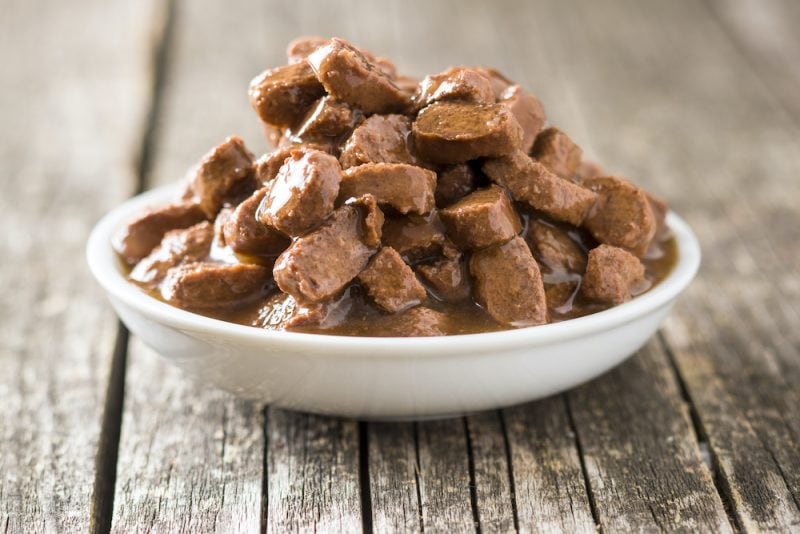
Mixing wet dog food with dry kibble is another easy way to soften your pup’s meal. Wet food usually has an enticing aroma, texture, and taste, which can make it an ideal option for a picky eater.
Stick to a ratio of around 70% dry kibble and 30% wet food. Gradually introduce the wet food in small amounts. Keep in mind that wet food does spoil fairly quickly, so it’s important not to leave it out throughout the day — most wet foods can be left out for an hour before they spoil.
8. Use Commercial Dog Food Toppers
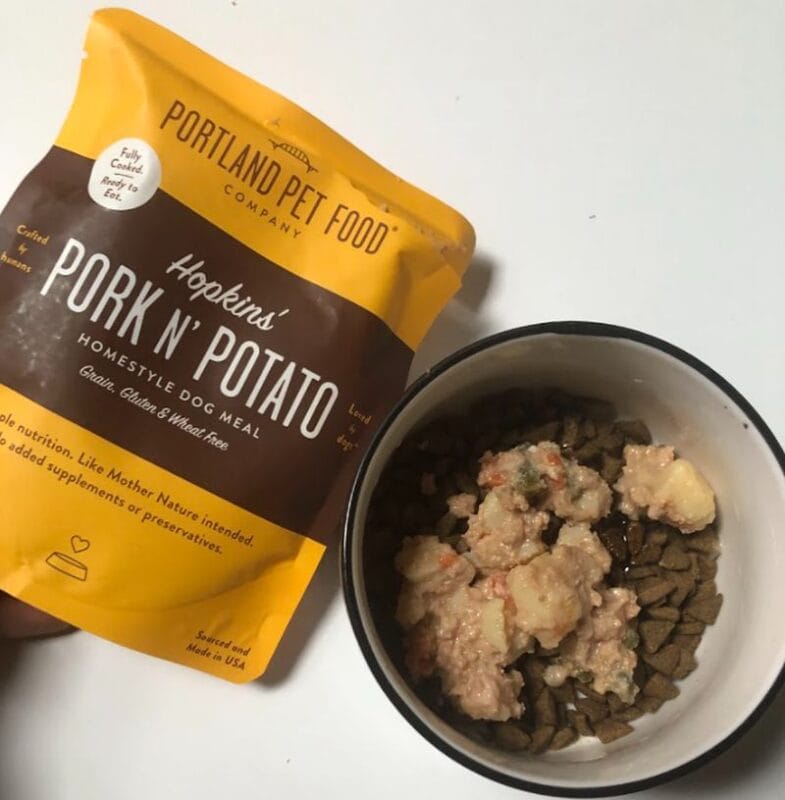
If you don’t mind pampering your pooch— ahem, splurging the cash, then commercial dog food toppers make excellent options. There is a wide range of liquid-based dog food toppers available that can soften up dry kibble. Since they’re specifically designed for canine companions, you can also rest assured that they’ll be safe for your dog to consume.
Commercial dog food toppers are generally rich in nutrients, flavorful, and come with handy serving suggestions on the back of their packaging.
9. Cottage Cheese
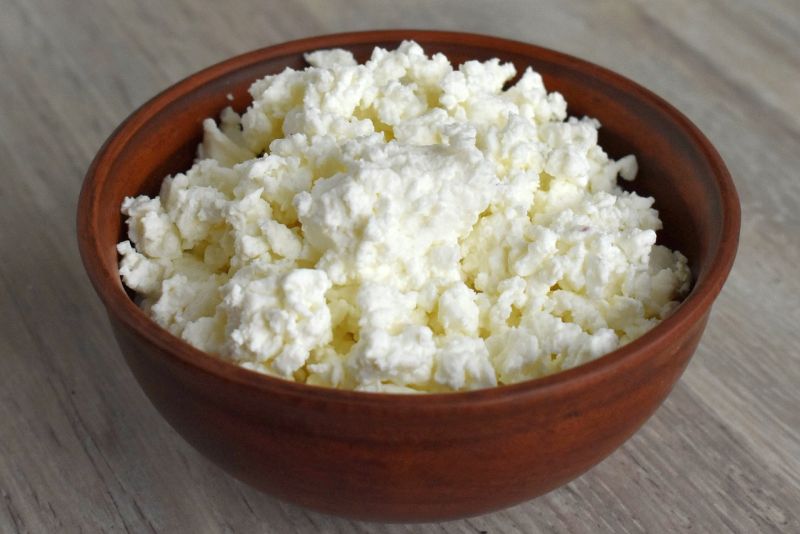
Cheese is a high-value reward for most dogs (and humans!). So, if your pup is reluctant to nom on his dry kibble? Cottage cheese is a great option. While it’s lower in fat and sodium than other cheeses, it’s still tasty and has a soft, bumpy texture that can help engage your pup’s senses. It’s also lower in lactose than many other cheeses, meaning it’s less likely to cause an upset stomach.
Cottage cheese is an excellent source of protein, calcium, magnesium, vitamin A, and amino acids. Use a couple of tablespoons to soften up dry kibble. Always double-check that the cottage cheese doesn’t contain any added flavorings that are toxic to dogs, such as onions, garlic, and chives.
10. Wet Veggies
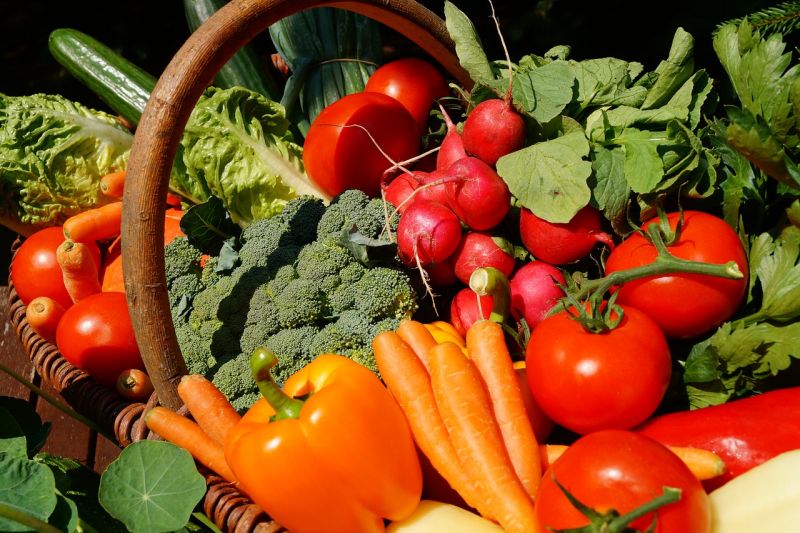
Wet veggies might not be the most exciting way to spruce up kibble. However, they’re an affordable way to soften up food while increasing your pup’s daily water intake. Wet veggies are generally easy on the stomach and most dogs will happily consume them without complaint.
Keep in mind that wet veggies aren’t the greatest source of nutrition. If you are looking to add nutritional value to your pup’s food, your best bet is to try another food mentioned above, like bone broth, fish oil, or yogurt.
Why Do Some Dogs Need to Soften Food?
Dogs may need to eat softened dog food for a variety of reasons, ranging from health-related causes to palatability problems. We’ll share a few of the most common reasons your doggo may prefer softer dog food below.
Picky Eater
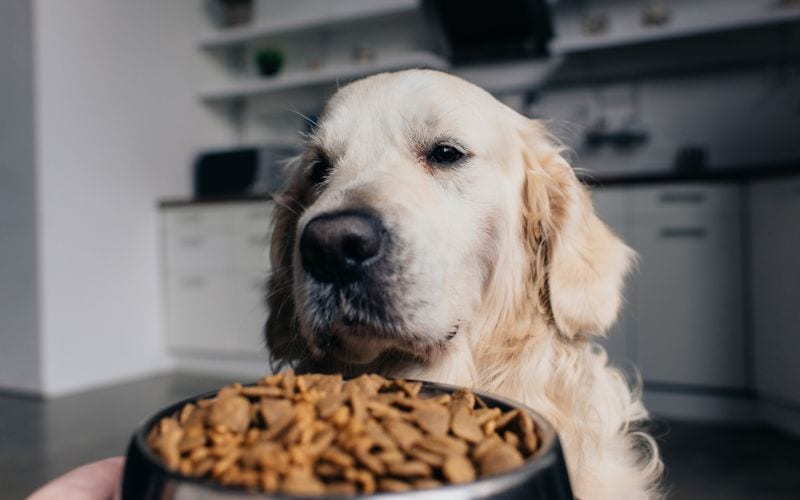
Just like humans, some pups are just picky eaters with Michelin-star expectations of their kibble. In other words, they’ll refuse to eat anything unless it has been softened to their liking (and preferably served up on a silver platter!).
We’re not blaming them though — soft food, especially when mixed with some tasty cottage cheese, yogurt, or a flavorful food topper is a lot more appealing than some basic dry kibble. Many dogs also aren’t picky eaters by choice; they have sensitive stomachs that don’t react well to hard kibble.
Bad or Missing Teeth

Dogs with missing, brittle, or sensitive teeth often experience pain while chewing, and dry kibble’s hard texture can exacerbate this pain and make it even harder for them to eat (and more importantly, enjoy eating!).
Softening the food is a simple but effective way to alleviate this pain as it’s easier on sore mouths and doesn’t require the kind of intense chewing hard kibble does. However, you can also just opt for one of the best dog foods for dogs with bad or missing teeth.
Old Age

Senior dogs often suffer from health problems that can make it harder to properly eat and digest dry food, including gum disease, colitis, inflammatory bowel disease, and pancreatitis.
Dogs tend to lose their sense of taste and smell as they get older too, which can put them off dry kibble that doesn’t have a prominent flavor. Adding a strong-flavored bone broth, food topper, or wet food can help with this issue in particular.
If your usual “scoff-everything-down-in-seconds” dog exhibits sudden pickiness, you should contact your vet if his appetite does not return to normal within a day. It may indicate an underlying health issue or an adverse reaction to a new medication.
The Benefits of Softening Up Your Dog’s Food
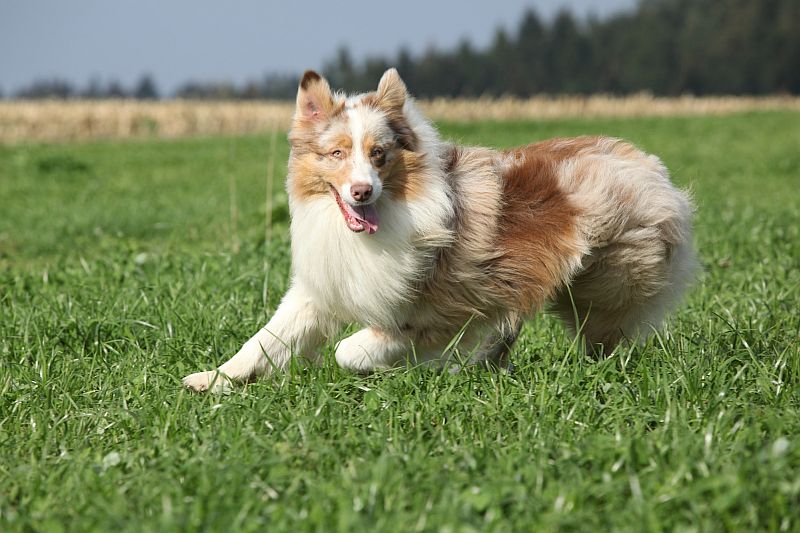
While it’s a bit more time-consuming, softening dry kibble comes with a range of fantastic perks. It can make the food more digestible, easier to chew, and more appetizing for fussy eaters. In some cases, it can even provide additional nutrition and health benefits.
Makes Food Easier to Eat
Softened dog food has a gentle, mushy texture that doesn’t require intense chewing or biting to break it down into digestible pieces. It can be swallowed effortlessly, whether or not your pup has all his teeth intact!
Makes Food More Appetizing
Some dogs find that dry kibble smells and tastes bland, especially if they’re older and their sniffers aren’t as good as they used to be. You can elevate the flavors of kibble by adding the likes of bone broth, cream cheese, and commercial dog food toppers.
Familiarize yourself with the kinds of flavors your pup drools over; don’t use yogurt if he’s never been tempted by it before!
Often Provides Additional Nutrition
Several foods used to soften up kibble come with additional nutritional value for your pooch. For example, bone broth is rich in calcium, magnesium, and phosphorus, all of which can potentially aid digestion and support immune function.
May Provide Joint Benefits
Certain food mixers that contain omega-3 fatty acids, such as fish oil, can help reduce inflammation and relieve joint pain.
May Help Ease Digestion
Soaking dried kibble makes it soft and easy to break down, which can ease the strain on your pup’s digestive system. This benefit is especially useful if he often suffers from gastrointestinal problems like constipation or diarrhea.
Ensures Better Hydration
Virtually every food used to soften dog kibble is high in moisture content, meaning your pup will be getting another source of hydration throughout the day.
This perk is ideal if your dog struggles to meet his daily water intake requirement, no doubt because he’s too busy begging for treats, snoozing on your lap, or sniffing around the yard!
Adding water to your dog’s food can certainly help with his hydration level, but you can also set your pet up with a dog water fountain to help encourage him to drink more water.
Softening your pup’s dry food offers a whole host of benefits, and while the process is a little time-consuming, it’s definitely worth it! Your canine’s stomach is sure to appreciate it. Plus, it’s a cheaper alternative to buying wet dog food.
Is your foodie pup a diehard fan of wet kibble? Do you know of any other safe ways to soften dry dog food? Let us know in the comments down below!


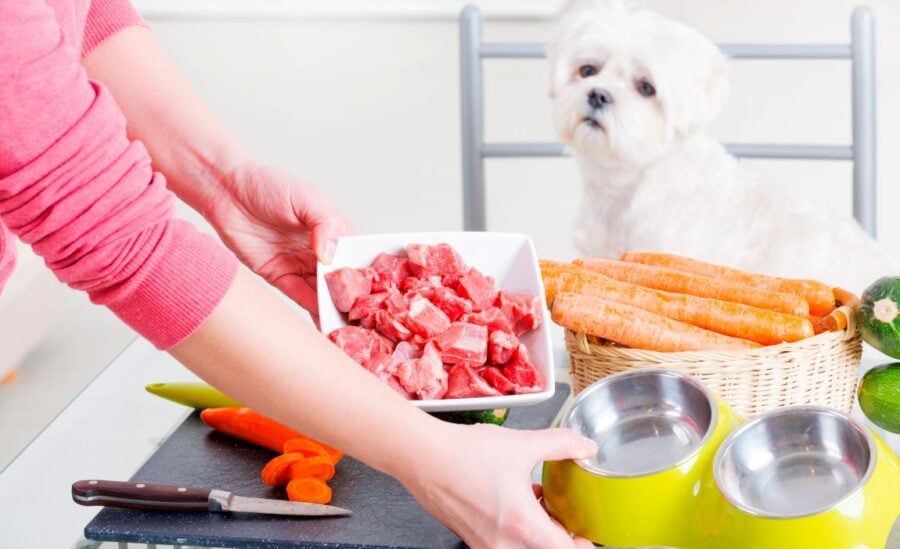



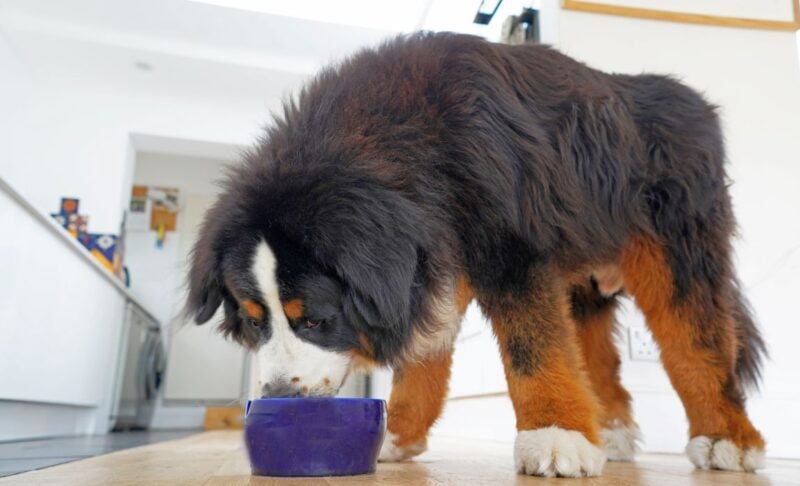

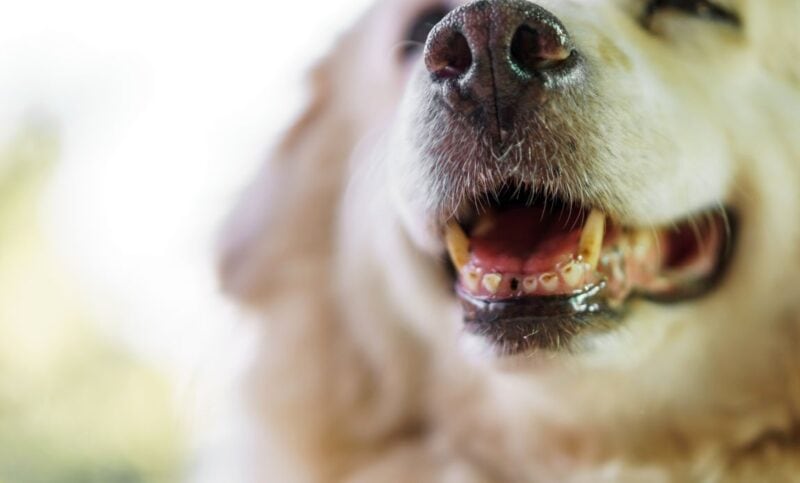
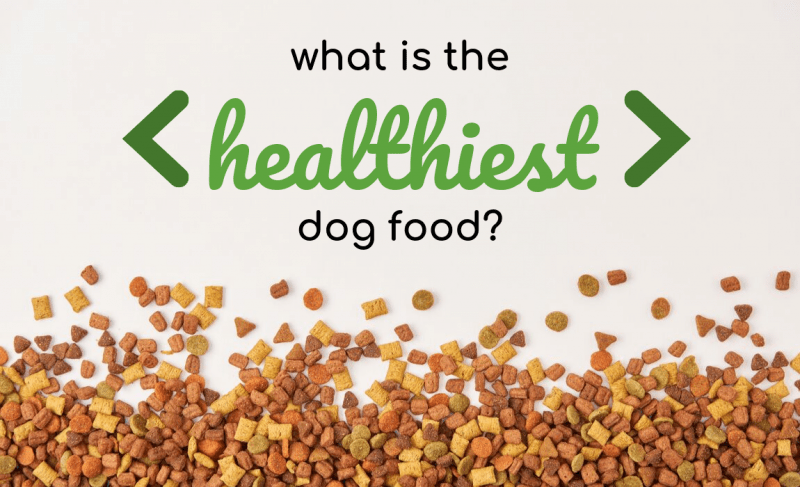
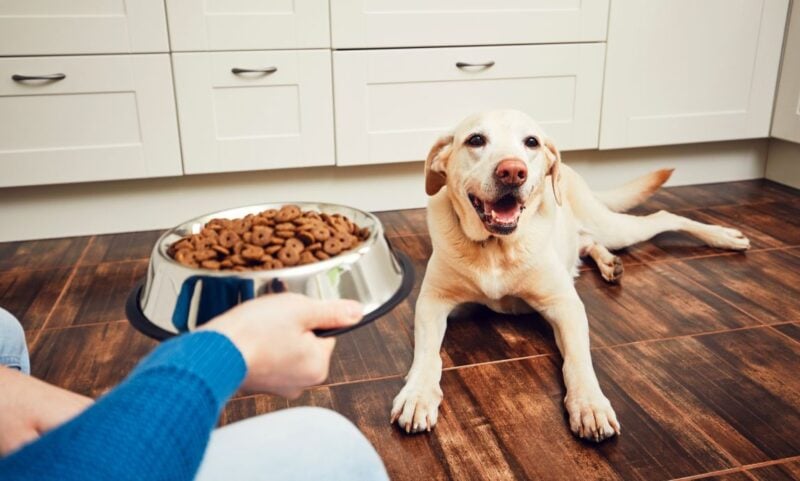
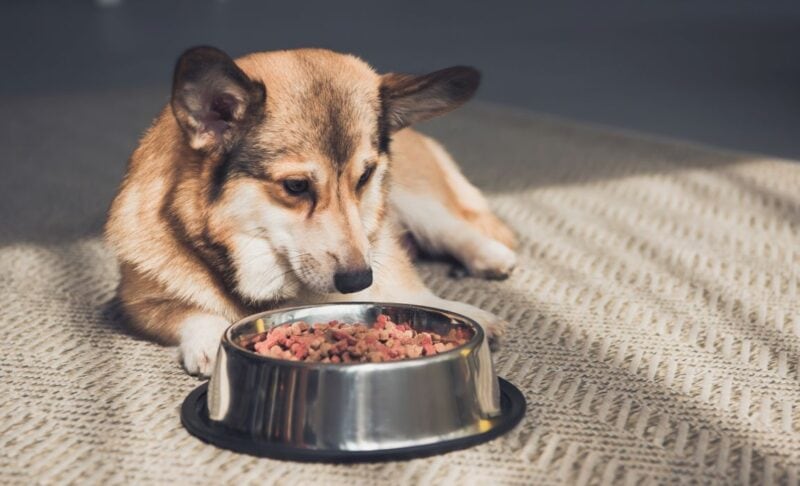

Leave a Comment